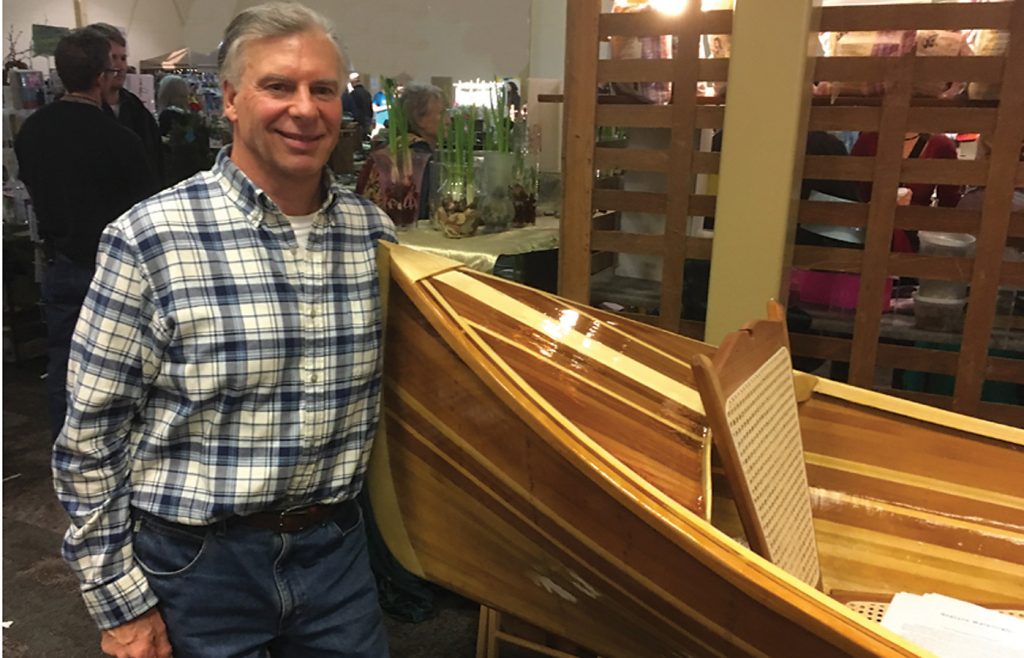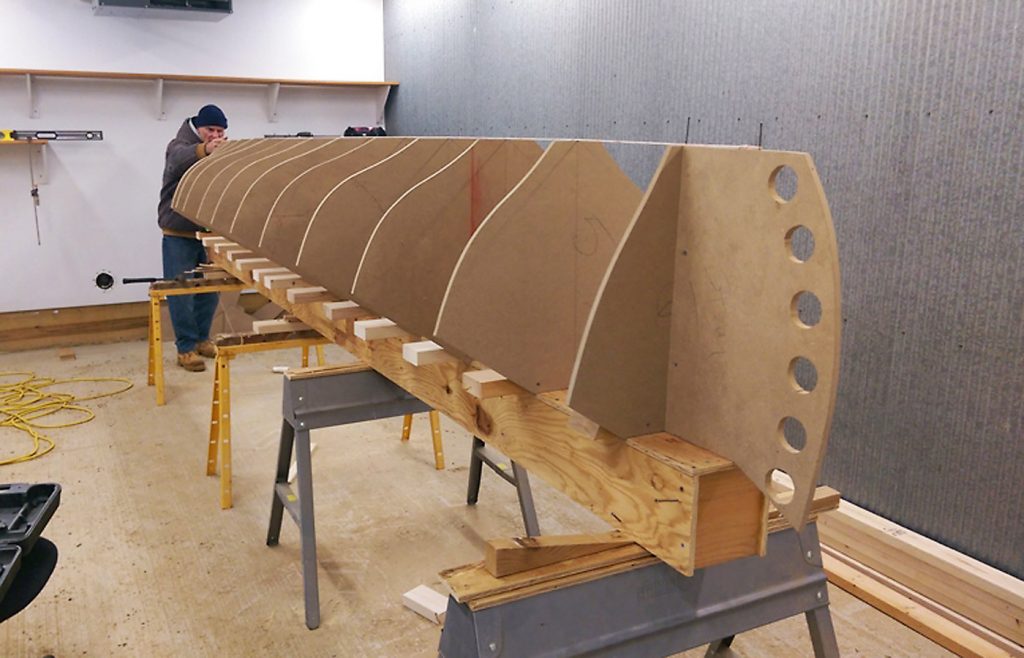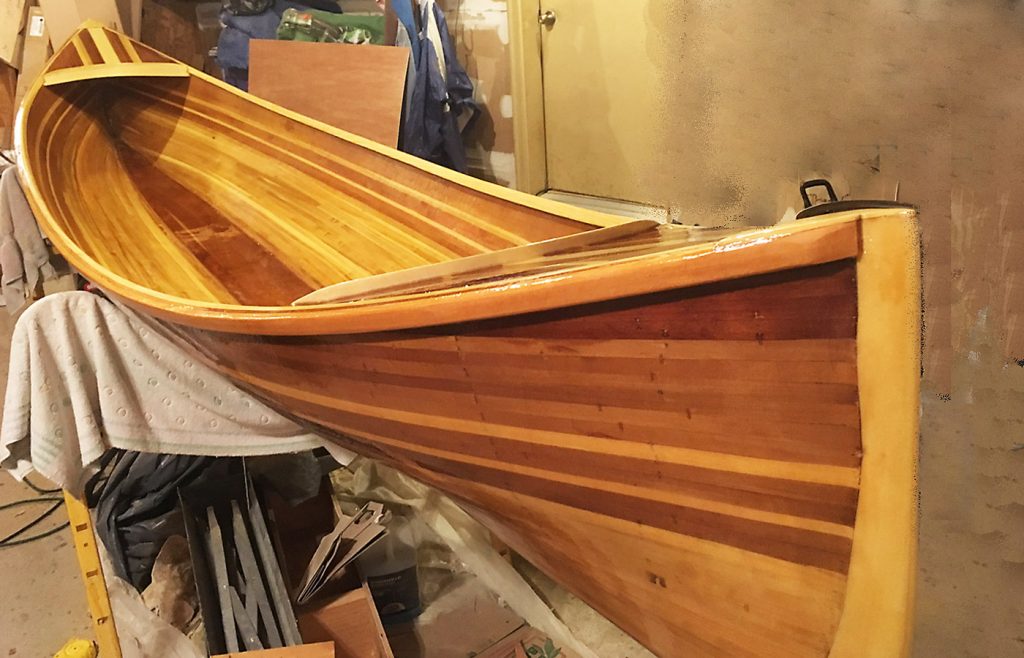
David Huebner is living a dream. Fascinated by finely crafted wooden boats, he’s built an Adirondack guideboat and started his own company, Neptune Watercraft. “I always dreamed of just bending wood in such a way it that could take you across a body of water,” he says.
Huebner grew up watching his surgeon father build ships in bottles, and his family heritage involves master craftsman from the Black Forest in Germany. “I was always working with wood in some capacity growing up,” he says.
Huebner wanted to build a boat that was both beautiful and powerful. After research, he settled on an Adirondack guideboat as his first build. “The Adirondack guideboat is like the Ferrari of row-boats,” he says.
Initially created in the 19th century to provide trappers with sturdy, lightweight craft, the Adirondack guideboat became the boat of choice for wealthy vacationers taking river tours. The slim boats are rowed rather than paddled, which makes them faster than typical canoes. Not only are they fast, stable, and easy to portage, they’re beautiful works of art.
“They call them the poor man’s yacht,” Huebner says, “because you can build them out of beautiful wood, and finish them ‘bright,’ which means you finish them to show the wood, rather than painting it.”

Using a design by world-class boat-builder Nick Schade, Huebner created a sleek, modern Adirondack guideboat from scratch. Nineteenth century-style guideboats have interior ribs that are held in place with screws and copper nails. Modern guideboats are built without interior ribs, using the “strip-built” method popular for canoe construction.
“You do what’s called a bead and cove,” Huebner explains, “which is a fancy name for tongue and groove. The strips fit in perfectly as they rotate around the bilge. Every single strip that meets the next strip has glue all the way along and licked into that joint, so it’s very strong.”
After the hull is pieced together, the whole boat is wrapped in six-ounce fiberglass cloth. “It looks just like a white cloth, but when you pour epoxy on it, it just completely disappears.”

The fiberglass is put down with three coats of epoxy and three coats of spar varnish on both the interior and exterior. After varnishing, the hull is sanded smooth, a contemplative, meditative process that takes weeks to complete. “You have to really work hard to get this kind of finish,” Huebner says.
It also makes the boat exceptionally strong. “You could drop this off a building and it’d bounce. It’s as strong as any prefab kayak that’s made out of plastic.”
The finished Adirondack guideboat, with an asking price of $18,000, is currently on display in the window at Central Park Furnishings in Fairfield. What’s next? Huebner has several more projects that he’d like to pursue. “I want to produce beautiful, elegant watercraft,” Huebner says. “I have four or five I’ve picked that are just the tops.”
Two boats David Huebner has chosen for upcoming builds are the Switzer Bullet, a 16-foot-long mahogany runabout with two cockpits, and the Baby Bootlegger, a 12-foot-long ultralight canoe that weighs only 20 pounds. For more information on Huebner’s work, email him at shiva1952june@yahoo.com.
